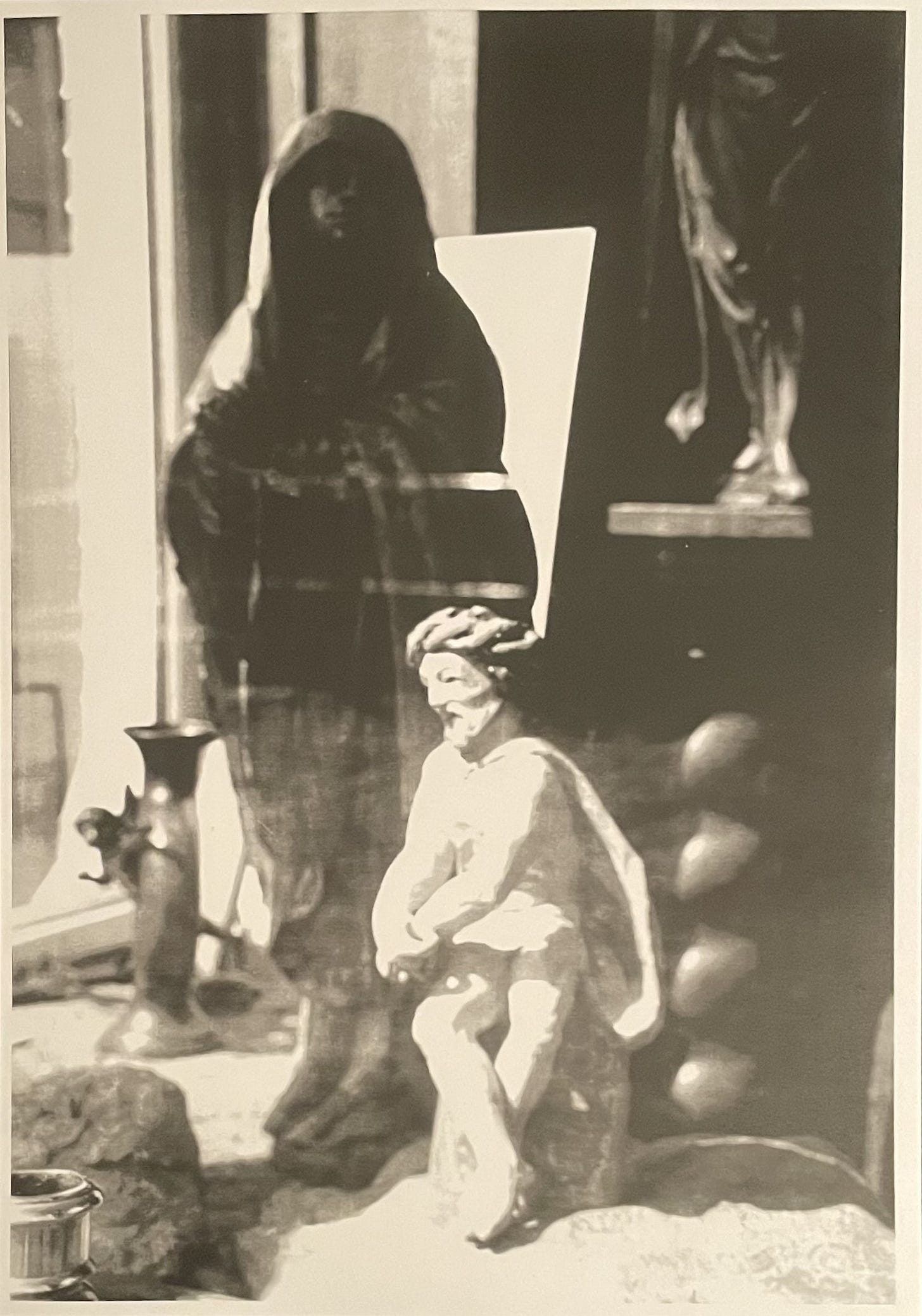PINS - Rule Seven: Write Out More Orders
(The White Lady walks in the grounds, past the canal, cut off by the new motorway.)
Oh no, I have perused the photocopy and it says that we have to “write out three more orders to start with, and place on a table. And then turn up each move.”
But this means we have to write out some more orders. If you remember rule six, we were told we begin with two full moves, with no objectives. I don’t know if these new orders for moves, “placed on a table”, corresponds to the previous moves without objectives.
One thing we can say: with this new rule, we can see that we haven’t started yet. At present, I readily admit to being confused, as there are no further explanations. But I suppose these orders can be anything. And they will become moves, at some point.
We need to retire to the garden to think.
According to The Johnny Garden Book (Arthur Prensky, Garden Publications Ltd., 55 Russell Sq., London, W.C.1. 1950), it is worth remembering that a garden shed has no aesthetic merit at all. The Johnny Garden Book tells us to place your shed out of the vista of any path, and camouflage it by placing shrubs or climbing plants around it. This gives us one order.
However, the shed cannot be hidden and takes up space in the backs, next to the coal bunker. It *was* hidden in a manner of speaking, behind a trellis fixed onto next door’s brick wall, something that had been there since the 1930s. The trellis was painted green, like most other outdoor structures, and doors and window frames in the area. The paint was a bright grass green concoction that smelled rather tangy, especially when wet, and one that quickly blistered in the sun. A common sight, green doors. There must have been a fashion for it in the 1950s and 1960s, or evidence of a post war job lot of green paint, that somehow got distributed around East Lancashire. Even the Nissen huts near the nursery on Moss Hall Lane were painted green.
In any case, we can’t move the shed because there are hedgehogs living under it and it’s full of stuff in tins and jars we can’t name. And the coal bunker’s in the way.
But if you wish, one order can be to hide the shed.
Another order can be to avoid spontaneous combustion. We note that the photograph of the foot (and otherwise charred and powdered remains) of Dr John Irving Bently (92), of Coudersport Pennsylvania, in The World Atlas of Mysteries (Pan Books, 1978) has had a profound effect on those who grew up in the 1970s. Meaning this order should be one that is “a given” to execute. Maybe the power of the photograph and its effect on the young minds of East Lancashire and Tyneside is because the leather slipper attached to Dr Bentley's remaining foot and zimmer frame add a gruesome, maybe bathetic note.
A third order could be one to “plant your pole”, by marking the correct alignment when you are on line. This is an order from The Biscuit Book (1954 edition). The illustration encourages those so willing to wear tweeds, plus fours and maybe a cap. This gives the pole planter an appearance not dissimilar to legendary archaeologist, T.C. Lethbridge. Of course, you can do this in any clothing you feel is suitable. To enact this order, you have to wave your hands up and down in a motion not too dissimilar to a large bird flapping its wings.
Other thoughts that may help you think of three orders.
Throwing the ball back from next door.
Accrington’s spectacular arched railway bridge appearing regularly in a dream as made of papier-mâché; huge slabs of dripping, peeling sides of paper, slowly curling and collapsing onto Whalley Road.
Wondering when Elswick in Newcastle upon Tyne would have new houses on them instead of rubble. Similarly, looking at old street patterns of forgotten terraces (streets and street lamps still intact) in Blackburn, Lancashire.
The clackety-clack of the Mill, running through the night, clickety-clack, out the back.
How to and where best to wear a Phrygian cap.
Finding the Heap Of Trouble.
Think how to attract Mistle Thrushes.
Visual accompaniment for this post can be found in the Museum of Photocopies.





I seem to remember all (at least the ones I encountered) outside loos had green doors in various shades and my gran's nissen hut/bomb shelter was also painted green. It was Blaster Bates, the great explosives expert and after dinner speaker that utilised the comedy aspect of green doors.